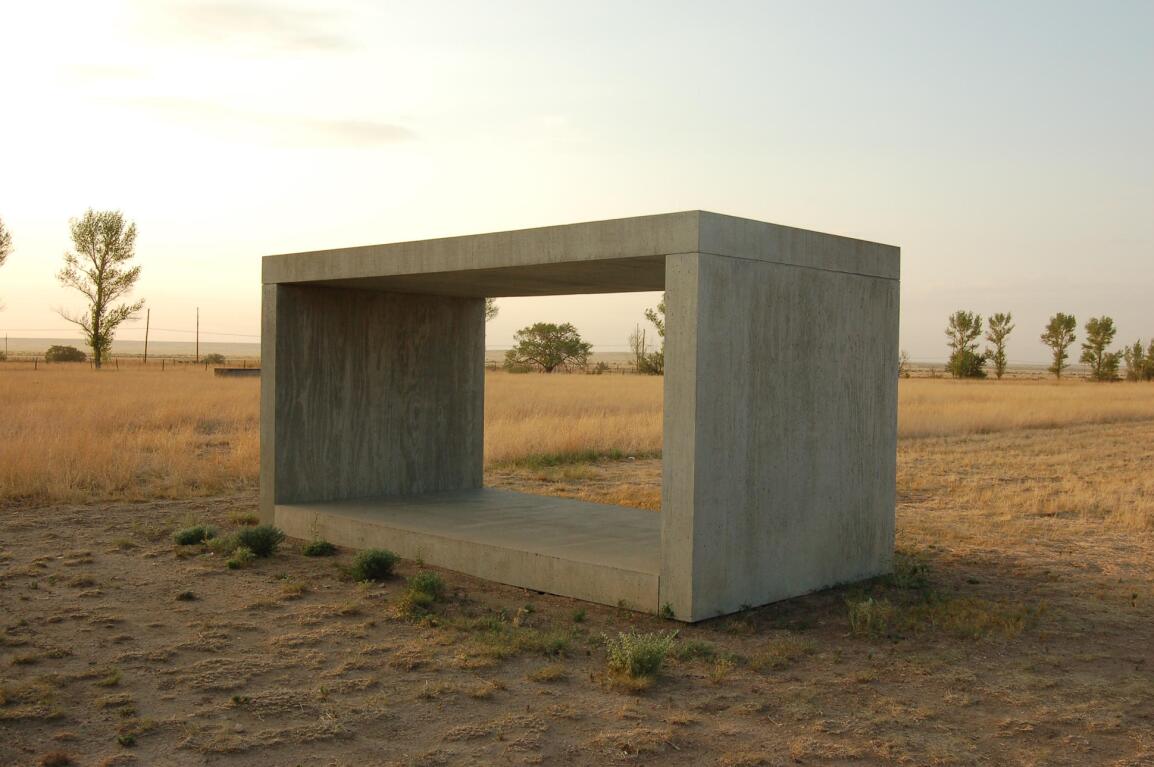
B efore Donald Judd emerged as a sculptor, known for his “stack” works, his iterations of hollow rectangular masses, and for his permanent installations and encampment in Marfa, Texas, he was a painter; before he was a painter, he was a critic and before he was a critic, he was a devoted academic. This unique combination of roles enabled Judd’s rise and reception as one of the foremost artists of the second half of the 20th century.
In the early 1960s, Judd and his New York City cohort (including Carl Andre, Robert Morris, Tony Smith and Richard Serra) sought to reduce sculpture to what can be understood as its ground zero, and in doing so, incited heated debate among the leading critics of post-war art. The critical dialogue surrounding this group of artists gave way to the classification of the movement we now know as Minimalism (though Judd openly rejected the term). While he was almost immediately celebrated as both influential and pioneering, Judd’s radical progressions on the sculptural form weren’t always met with critical praise, and the pages of Artforum have recorded the ongoing, at times divisive, conversation around his practice.

The first critical writing on Judd in Artforum appeared in the 1965 Summer Issue. In an essay by historian and critic Barbara Rose, she notes the significance of Judd’s rapid ascension. Praising his sculptures for their exacting innovation and asceticism, Rose celebrates Judd for “keeping pace with the best new painting” and for renouncing tired sculpture that simply “evoked human or landscape relationship.”
“Looking for the roots of Judd’s work in sculpture alone is liable to end in frustration” she writes, “like everything that is genuinely original, the pieces when viewed for the first time seem to exist without precedent” (Summer 1965 issue). Rose also first articulates a significant aspect of Judd’s practice when stating that his work “almost has to begin with a series of negatives; like Reinhardt’s black paintings, it is partially defined by what it has renounced” (Summer 1965 issue). It is in this initial meditation on Judd that Rose lays the groundwork for her seminal essay published in Art in America, “ABC Art,” which began to codify the Minimalist movement and define the zeitgeist spurred by Judd and his downtown circle.
As Rose eludes to in “ABC Art,” Judd’s practice revolved around specific tenets which he often defined in his writing (both on his own work as well as that of his contemporaries). In his 1965 essay, “Specific Objects,” Judd developed concepts that became intrinsic to his practice such as placing artworks in “actual space” as well as the notion that the relationship between the spectator and the object should be what produces the aesthetic experience. Judd’s decision to place his sculptures directly on the floor without any pedestal marked a shift in the way viewers could interact with the work. As artist Josiah McElheny notes in his essay on Judd:
“Not only do Judd’s materials link his work to the world beyond art, but his forms also echo those of architecture, packaging, design.”
Judd effectively expanded the world of sculpture by reducing the medium to its foundation, focusing on the formal subtleties of color, space and material.
While Judd was embraced as the center of a trailblazing new wave, he was also met with antipathy by some of Modernism’s loudest critical voices. In Artforum’s 1967 Summer issue, he served as a primary subject in Michael Fried’s now-notorious essay, “Art and Objecthood.” In his cutting commentary on Judd and his counterparts, Fried equates Minimalist works to objects, and objects – he believed – stood in direct opposition to art. Fried maintains that a work of art should be transcendental and exist apart from the world of the viewer as its own self-contained entity.
He understood the work of the minimalists to be objects in the sense that they rely on the interaction with the viewer (now effectively the subject) for their meaning. Fried considered Minimalist art’s meaning to be inseparable from its context (the gallery space, the wall, the light in the room) and believed that art did not belong in the “actual space” that Judd actively sought to place his work in.

So while leading critics like Fried and old school formalist Clement Greenberg were skeptical of this burgeoning new wave, their interpretations, complaints and criticism often confirmed and solidified intentions of the Minimalists. It is without question that Donald Judd acutely expanded the territory of art making and critically engaged art-practices; both his aesthetic and conceptual contributions influenced subsequent avant-garde movements – Minimalism served as post-Modernism’s sleek predecessor. His impact on both contemporary art and design persists. As Josiah McElheny contends: “Judd’s work implicitly suggested the importance of the secular, material world that he negotiated daily. And it continues to do so powerfully today” (Summer 2004 issue). In Spring 2020, the Museum of Modern Art will present the first US retrospective in 30 years of Judd’s work.
Artforum covers, images of interior pages and quotations are used with the permission of Artforum International.







